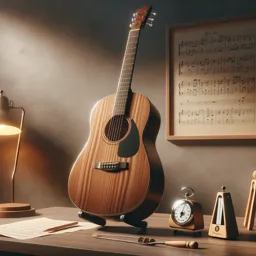Introduction to Classical Guitar
The classical guitar is celebrated for its warm tone, versatility, and ability to convey deep emotion. Whether your goal is to perform timeless masterpieces or create original compositions, starting your journey with this instrument opens a world of musical possibilities.
Choosing Your First Classical Guitar
Selecting the right guitar is the first step toward a rewarding learning experience. Classical guitars feature nylon strings that are gentler on the fingers, making them ideal for beginners. Consider factors like body size, neck width, and string action for comfortable playability. If possible, try different models in a music store to find the one that feels most natural to you.
Understanding the Basics: Posture and Holding the Guitar
Proper posture ensures comfort and prevents strain. Sit at the front edge of a chair with your feet flat on the floor. Use a footstool under your left foot (if you are right-handed) to position the guitar at the correct angle. Rest the guitar on your left leg, keep your back straight, and maintain relaxed shoulders and wrists.
First Steps: Open Strings and Simple Melodies
Familiarize yourself with the names and tones of the six open strings—E, A, D, G, B, and high E. Begin by plucking each string individually, aiming for a clear, warm sound. Progress to simple melodies on one or two strings to develop coordination and comfort with the fretboard.
Developing Fingerstyle Skills
Fingerstyle playing is central to classical guitar technique. Use your thumb for the bass strings and your index, middle, and ring fingers for the treble strings. Start with basic exercises like alternating between thumb and fingers to build dexterity, precision, and control.
Reading Basic Music Notation and Tablature
Learning to read both standard notation and tablature will expand your repertoire. Standard notation helps with rhythm and musical expression, while tablature offers a straightforward way to find notes on the fretboard. Dedicate a few minutes daily to practice both systems.
Practice Tips for Steady Progress
- Maintain a daily practice routine, even for just 15–20 minutes.
- Set small, achievable goals to track improvement.
- Listen to recordings of classical guitarists for inspiration and stylistic insight.
- Be patient and consistent—skills grow steadily with dedication.
Next Steps in Your Musical Journey
As your skills develop, challenge yourself with more complex pieces, explore basic music theory, and consider lessons with an experienced teacher. This structured approach will deepen your understanding and enhance your musical expression.
Conclusion
The classical guitar offers an inviting and fulfilling path into music. With the right instrument, good posture, and a consistent practice routine, you’ll soon find yourself enjoying the beauty and richness of its sound. Let curiosity and passion guide your progress—happy playing!

























